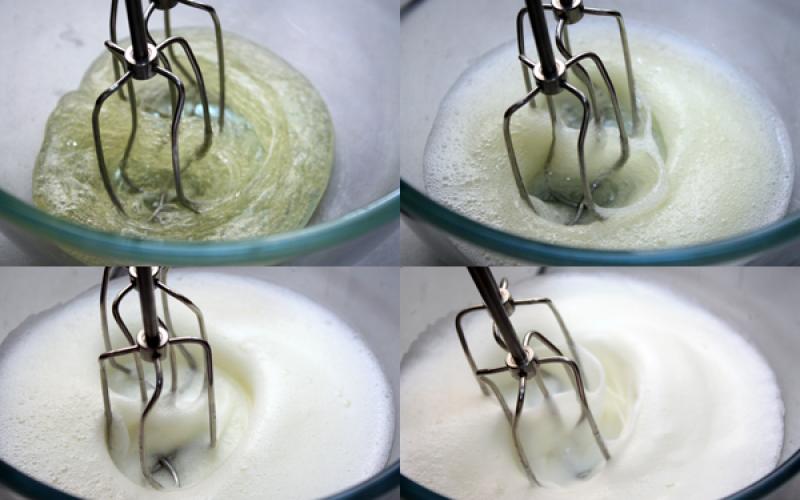Hello, dear fans of rest in the Crimea!
What jellyfish can be found in the Black Sea? Description of marine life, their photos and videos. What should be feared during a holiday in the Crimea.
What jellyfish live in the Black Sea
Unusually beautiful jellyfish in the Black Sea and in all other corners of the planet are the most ancient inhabitants of the Earth. Their age is hundreds of millions of years, and appearance and the simple structure of the body are unchanged from that very time.
The composition of jellyfish is about 98% water, collected in a jelly-like mass. Only the presence of muscle fibers and a simple digestive system make it possible to classify them as an animal organism. Jellyfish move slowly due to muscle contraction, but they cannot swim against the current. The inability to resist the currents has led to the fact that jellyfish on the Black Sea coast are contemptuously, but quite scientifically called plankton. But how can this plankton ruin a beach holiday!
Science knows more than two thousand species of jellyfish. There are only three of them in the Black Sea: Aurelia, Mnemiopsis and Cornerot. According to last year's data, there are especially many jellyfish near Evpatoria, Odessa and in the area of the Kerch Strait, where the Black and Azov Seas meet. Analyze to implement your plans for this summer. There is also an anomalous number of jellyfish on the western coast of the peninsula: in the area of Karnikitsky Bay and near the village of Chernomorsky.
Aurelia aurita- the most numerous species of jellyfish in the waters of the Black Sea. Eared aurelia, as local fishermen call it, usually does not exceed 30 cm in diameter. With a seasonal increase in the number of this species, sea water is literally a compote of translucent amorphous bodies. This is quite unpleasant, but completely painless for a person. Such a number of aurelias is explained by the fact that they easily withstand sea water temperatures up to 30 ° C. Photo below

Mnemiopsis leidyi- view without tentacles. They are unable to sting, but they glow in the dark very beautifully. These are alien jellyfish, and not the indigenous inhabitants of the Black Sea. They came here from the coast of the United States. Their incredible voracity poses a serious threat to commercial fishing. After all, Mnemiopsis does not stop eating fish eggs even when his stomach is full. It simply pushes out excess food in the form of a ball of mucus and further destroys the eggs and plankton. At the same time, it is easy to go without food for up to two weeks.

The most dangerous type of jellyfish for humans in the Black Sea
The jellyfish of the Black Sea that constantly live on our coasts (photos of the most interesting specimens can be seen here) do not pose any serious threat to people. But, according to the deputy director of the Institute of Biology Alexander Boltachev, cornerots ( Rhizostoma pulmo) - the most dangerous poisonous jellyfish of the Black Sea (photo at the top of the page) appear in abundance off the coast in August and September.
Large blue beauties should be avoided because their tentacles sting noticeably. Following a strictly scientific approach, these are not even tentacles, but elongated mouth growths. If you caught a Cornerot jellyfish, you must hold it strictly by the upper part of the amorphous body, in no case touching the processes. Especially jellyfish in the Black Sea are dangerous for the mucous membrane of the human eye. Be sure to bring first aid supplies with you when planning
Jellyfish of the Sea of Azov
In the seas of our country, there are two types of jellyfish that can leave burns. , or eared jellyfish, can grow up to 40 cm in diameter. These are round jellyfish with four rings in the center of the cap. The burns from this jellyfish are very mild, but if the toxins get into the eyes (usually through the hands), they will cause an eye burn that will last for several days. more poisonous jellyfish. It has large tentacles, and the rim of the hat is purple or blue. Meeting her always ends in burns. Irritation usually resolves in 1-3 days.
Medusa is one of the most ancient inhabitants of the Earth. Appearing more than 650 million years ago, they have changed little. Almost all jellyfish are a jelly-like organism containing more than 95% water in its composition. Only muscle fibers make a jellyfish a complete organism. The jellyfish lacks organs inherent in many other organisms. But there is a stomach, directly connected with the mouth. The mouth opening, in turn, is also a waste outlet. In many jellyfish, the mouth opening and stomach perform not only a digestive function, but also a moving function. The jellyfish fills the stomach with water and pushes it out. Thus, she moves in the direction she needs.
Jellyfish are an integral part of all more or less salty reservoirs. There are many types of jellyfish, found both in shallow water and at depths of more than 10,000 meters; both poisonous and completely harmless; both huge and very small; thermophilic and found among the ice of the Arctic.
There are three types of jellyfish in the Black Sea: Aurelia, Cornerot, Mnemiopsis. All Black Sea jellyfish are not dangerous. But troubles bring both vacationers and fishermen.
Rhizostoma pulmo common name
jellyfish cornerot

Fishermen call alikon or alikona. This is the most famous Black Sea jellyfish. Not because it occurs more often than others, but because it stings more often than others.
Carnerot can be recognized by its large cap, up to 50 cm in diameter, and large fleshy root-like outgrowths. It's not tentacles. The cornerot has no tentacles, their oral lobes branch out, forming numerous folds that are fused together. The ends of the oral lobes do not form folds, but end with root-like outgrowths.
Cornerot is a predator that prefers small fish, worms, small crustaceans. With their venom, they paralyze their prey and successfully eat it.
This species is widespread in the Black Sea. Especially a large number of appears on the coast in the second half of summer. This is not the most pleasant component of the holiday, but not dangerous either. The poison of one cornerot is not fatal to humans, but pain after a burn, not much stronger than nettle.
Cornerot is sensitive to changing weather conditions. For example, before a storm, jellyfish move away from the shore and go to the bottom.
Aurelia aurita Aurelia, or eared jellyfish
jellyfish aurelia
![]()
Common name for Aurelia or eared Aurelia. Fishermen call sherikh.
Aurelia reaches 40 cm in diameter. The "hat" is translucent, most often colorless, sometimes found with a slight shade of blue, pink, purple.
Aurelia is carnivorous. The diet of Aurelia includes molluscs, crustaceans, shells of larvae, crustaceans, rotifers, protozoa, diatoms.
Aurelia's habitat is the coast. The optimum temperature for Aurelia is 9 - 19 C0. , although it can withstand water temperatures down to -30 C0.
Mnemiopsis leidyi
jellyfish Mnemiopsis

Mnemiopsis is a jellyfish that does not have tentacles or stingers. It reaches a length of 10 cm, a width of 6 cm. This organism has the properties of bioluminescence - the ability to glow.
Sexual maturity of both female and male individuals occurs on the 13th day of life. Mneniopsis is able to fertilize itself. Spawning occurs only at night. One individual is capable of producing 8000 eggs. After fertilization, the embryo is fully formed like a jellyfish at the 20th hour of life.
Mnemiopsis feeds mainly on eggs of small fish (sprat, etc.), zooplankton. This organism will continue to consume food even after the stomach is full. When the stomach is full, excess food is thrown out in the form of a mucus ball. If there is no food available, Mnemiopsis can survive up to three weeks.
Mnniopsis is not a native of the Black Sea, but a native of the eastern shores of the United States, the West Indies. The invasion of this species in the Black Sea has done significant damage to fisheries. Currently, measures are being taken to reduce the number of this species.
hydroid jellyfish

Class Hydroids - Hydrozoa - include about 2800 species. In the life cycle in most hydroid polyps (Hydrozoa), as in most intestinal cavities: in Scyphozoa (Scyphozoa) and box jellyfish (Cubozoa), the sexual phase dominates life cycle- medusa. This group of medusoid individuals has its own distinctive features.
The digestive system of hydroids is represented by a gastric cavity that does not have partitions. The throat is missing. The ectoderm and endoderm converge along the edge of the mouth opening.
Digestive juices in the intestinal cavity of the hydra are secreted by glandular cells of the endoderm.
Tentacles hang along the edges of the umbrella, of which there can be 4, 8, 16, rarely more. Sensory organs are located at the base of the tentacles or between them. On the inner side of the edge of the umbrella, the ectoderm forms an annular protrusion, the so-called sail or velum.
Sex products are formed in the ectoderm. The nervous system is diffuse (scattered in the body) character. Nerve cells - neurons - form nerve networks and plexuses.
The composition of the hydra ectoderm includes epithelial-muscular, stinging, intermediate, nerve and pigment cells.
During the regeneration of the hydra body, new cells are formed from unspecialized intermediate cells.
The hydroid class combines, along with hydras, a large number of species of marine colonial polyps. Marine hydroids lead an attached lifestyle. Their colonies look like small bushes.
The presence of hydrode jellyfish in the Black Sea has not yet been detected.
Why are jellyfish dangerous?
Jellyfish are considered the most ancient inhabitants of our planet, they are about 650 million years old, and during this time they have practically not changed and remained in the same form as millions of years ago. Jellyfish are dome-shaped, 95% water, and the presence of muscle fibers makes the jellyfish look like jelly. The jellyfish does not have organs as such, but for that there is a hole into which food enters and is processed there, and the final result of processing comes out through that same hole. Jellyfish are completely different sizes and they live both in shallow water and at great depths, jellyfish can live both in warm waters and in very cold ones, they are even found near the ice of the Arctic.
Why jellyfish sting
The body of a jellyfish is covered with special cells that inject toxins into everything they come into contact with. Most of the stinging cells are on the tentacles of the jellyfish and the rim of its cap.
Jellyfish that live in the Black and Azov Seas do not pose a threat to human life. The stung place quickly turns red. Most people just feel uncomfortable about it. But experts still recommend immediately getting out of the water to the shore.
Jellyfish burn

Jellyfish burn can cause pain shock
In allergy sufferers, children, the elderly, and people with cardiovascular disease, the reaction to a jellyfish sting can be hazardous to health. The stung feels severe pain, it is given in the nearest joints, and then spreads to the whole body. Shock can stop a person from breathing. There are no jellyfish with such strong toxins in the seas of our country, but in the seas of Southeast Asia they are full.
First aid
First aid for a bite or burn of a jellyfish how to treat burns and stings of jellyfish
The stung place must be rid of jellyfish tentacles and poisonous cells (wash with water). They are not visible to the eye, so prevention should always be carried out. The stung place can be well wiped with a towel or sand.
For burns received by a jellyfish, you need to rinse the affected area with salt water. It is not recommended to wash the affected areas with fresh water, in which burning enzymes can be activated. If you have taken a jellyfish in your hands, do not touch your face after that, wash your hands well with soap and water. If a jellyfish burns your face, rinse only your eyes with copious amounts of warm fresh water and seek medical attention.
After that, the poison should be neutralized. Burns on the body can be wiped with vinegar, this will greatly relieve irritation, you can use soda solution, ammonia or alcohol.
To speed up recovery, use an anti-inflammatory agent in the form of a gel or ointment (such as a lifeguard or others).
The stung place should be protected from sunlight.
Ultraviolet radiation easily burns damaged skin and sunburn also appears on it.
If a blister appears, the meeting with the jellyfish does not always end in redness. Jellyfish sting can cause large blisters. First aid will be the same, but be careful not to burst the bubble. To protect the blister from breaking through, a bandage should be applied to it.
Sometimes on the beaches you can see how some self-treatment lovers rub themselves with jellyfish in the hope of getting rid of rheumatism, sciatica, and neuralgia. Such a "treatment" is unacceptable, it can lead to unpredictable consequences, since the venom of jellyfish is still poorly understood.
How to treat a jellyfish burn at home

Tablets and injections from the bite of a jellyfish
Fenistil.
It is a first generation antihistamine. It is recommended to take a capsule and apply a gel of the same name to the burn. This drug simply blocks the body's response to stimuli. three times a day for a week.
Eden.
It is a syrup with a pleasant taste. The drug is a new generation antihistamine. Not different large quantity side effects, which allows the use of elderly patients and those with heart disease.
Diazolin.
This is the most inexpensive antihistamine drug, which has a large number of side effects. The medicine belongs to the means of the first generation, respectively, it should not be taken by people with a sick heart and young children.
Suprastin.
It belongs to the first generation antihistamines. It is too effective remedy from allergies, with an impressive list of side effects.
Citrine.
Refers to third-generation drugs that do not cause drowsiness and do not affect the state of the cardiovascular system. Citrine's analogues are Erius, Trexil, Loratadin. These medicines can be taken for several months.
Diprospan.
This drug is used by paramedics to suppress an allergic reaction. This is a glucocorticosteroid, which, when administered intramuscularly, quickly enters the bloodstream and immediately relieves all allergy symptoms. This is an emergency drug, so you should not use it yourself.
No-Shpa.
Medopred.
Corticosteroid for the rapid relief of symptoms of a severe allergic reaction. Used for Quincke's edema and anaphylactic shock. This drug is used by emergency doctors for emergency care when a person is choking, he has swelling of the tongue and larynx. This injection is most often done with the bite of a purple jellyfish, the poison of which is very toxic.
The most dangerous poisonous jellyfish
Sea wasp. This jellyfish is extremely dangerous. Among those she stung, few survived. She releases enough poison to kill 50 grown men! Found in Australia, prefers shallow areas with reefs and algae.
Irukandji. This marine inhabitant is found in the waters of Oceania and Australia. Releases poison from the tip of the tentacle, which is not very painful. Accordingly, the victim ignores the bite. Over time, the poison spreads throughout the body, causing vomiting, nausea, paralysis, and back pain. There are few deaths from the bite of this jellyfish, but the consequences can be dire.
Physalia Portuguese boat. It is difficult not to notice the jellyfish, it has a beautiful dome that shines with all the colors of the rainbow. Found in the Mediterranean, Indian and Pacific Oceans. The bite is not very painful, so the victim continues to bathe. When poison enters the blood, there are malfunctions in the work of the respiratory and nervous system. A person can drown from convulsions and paralysis.
cross. Found in the northern part Pacific Ocean. Stings very painful. Upon contact with this marine inhabitant, it is worth getting out of the water, as dizziness, nausea, paralysis, and numbness of the limbs occur. Completely the poison leaves the body after 4 days.
cyanea. Long thin tentacles extend from the dome. When in contact with them, a strong burning sensation is felt. There are not many deaths, but the consequences are not the most pleasant. The victim feels weakness, nausea and swelling of the mucous membranes. Jellyfish are rarely found in coastal areas, preferring depth.
Invasion of jellyfish on Tarkhankut

Invasion of jellyfish Olenevka Invasion of jellyfish Okunevka Invasion of jellyfish Golden Crimea Invasion of jellyfish Donuzlav

The Black Sea jellyfish are the oldest jelly-like organisms without a skeleton or tissue base. They are found only in salt water of different saturation, they move chaotically, unconsciously. The existence of jellyfish cannot be attributed to any of the evolving categories. For 650 million years since their appearance, these transparent gelatinous animals have not changed one iota.
Anatomy
The body of a jellyfish is extremely primitive: of the internal organs, it has only a stomach, which is connected to the mouth opening. There is no hole for the removal of waste products; the animal also pushes out all the waste food masses through the mouth. The stomach in most species of jellyfish serves to move in space. It works on the principle of a jet nozzle, contracting, pushing out the collected water and thereby creating thrust, due to which the movement occurs.
Varieties
In total, thousands of species of jellyfish live in the water bodies of the Earth, seas and oceans. Some live in colonies in the form of huge aggregations, slowly migrating with the current or under the influence of the wind. Others are, as a rule, rather large specimens, they live apart, hunt alone, but do not have housing. Jellyfish do not have a settled reflex, and they never linger in one place.
The stinging jellyfish of the Black Sea are not numerous, there are only three types of them: Cornerot, Aurelia and Mnemiopsis. These animals are well studied, but belong to the category of individuals that are under the constant supervision of scientists.

Population spread
The largest Black Sea jellyfish is the rhizostoma-cornerot (Rhizostoma Pulmo). The diameter of her round body can reach half a meter. Cornerot is a well-recognized animal, its difference from other species lies in the absence of tentacles. Instead, massive branches up to a meter long extend from the dome. Each has spongy thickenings.
How is the cornerot arranged?
The dome, or umbrella, of a milky-white jellyfish, rounded, spherical in shape, a purple fringed border runs along the edge. Hanging from under the dome are eight fleshy roots with soft growths that hide poisonous stinging threads. At someone else's touch, the jellyfish throws out stinging arrows and can deliver unpleasant sensations similar to a nettle burn. The poison is weak, its effect wears off after a few days.
Cornerot feeds on small fish, marine worms, and small crustaceans. It paralyzes its prey with poison and then eats it. This species of jellyfish is the largest population in the Black Sea. And although there is no benefit from these animals, it is the cornerot that has a unique ability, for which the Black Sea fishermen appreciate it. This jellyfish is a living barometer, it is sensitive to weather changes, on the eve of a storm it moves away from the coast and goes into the depths.

However, not all marine protozoa have these abilities. Other Black Sea jellyfish, Aurelia and Mnemiopsis, do not feel the approach of bad weather, remain on the surface and die by the thousands. These two species are less numerous, but their numbers are also significant. Habitat - mainly in shallow water, along the coast of Crimea, the area of the city of Sudak, the village of Planerskoye and up to Kerch itself. Both species are able to move, but their migration is chaotic.
The Black Sea jellyfish have long been studied by scientists for movement. Over many years of observation, only one conclusion was made: there is no pattern in the movements of gelatinous creatures. They are completely left to the elements and resemble autumn leaves: where the wind blows, they float there. Scientists tried to draw a logical chain, linking the migration of jellyfish with the prevailing winds. However, the jellyfish of the Black Sea, even in this matter, did not live up to expectations, they simply never aspire anywhere. If there is no wind, they stand still, the wind blew - they stirred.

Aurelia
Another large jellyfish that lives in the Black Sea is Aurelia. The diameter of her umbrella, or dome, is about forty centimeters, the body is translucent, usually colorless, but sometimes acquires a pink, blue or purple hue. In the upper part of the dome, four circles are visible, arranged symmetrically. These are the sex glands. The poisonous jellyfish of the Black Sea are same-sex creatures, they fertilize themselves when the time comes for reproduction.
Aurelia, or Sherikh, as it is also called by fishermen who hunt in the Black Sea, feeds on small crustaceans, larvae, and diatoms. Having caught the prey, the jellyfish puts it to sleep with poison and, after the victim is immobilized, slowly eats it. Aurelia lives in the coastal strip, in shallow water, does not swim far into the sea and does not sink into the depths. This format of existence is explained by the fact that the jellyfish is afraid of the cold, its living space is limited to warm water.
However, this species is very tenacious. The jellyfish is thermophilic, but can withstand sub-zero temperatures without dying. Such abilities are observed in many invertebrates, some endure cooling in motion, others fall into anabiosis.

Mnemiopsis
A jellyfish of a relatively small size, up to ten centimeters, which lacks tentacles and stings. Differs in the ability of biological luminescence, that is, it glows in the dark. Having been born, Mnemiopsis develops rapidly, puberty of both males and females occurs no later than two weeks from the date of birth. The process of fertilization is not of a fundamental nature, the jellyfish is capable of self-reproduction. The embryo is formed within twenty hours.
Mnemiopsis feeds only on zooplankton, sometimes it eats caviar of small fish, sprat, tyulka, capelin. Medusa is distinguished by the absence of a satiety reflex, she always eats. In the case of complete filling of the gastric space, the excess is thrown out and the process continues. At the same time, with a complete lack of nutrition, a jellyfish can live from two to three weeks.
Mnemiopsis was brought to the Black Sea from the eastern coast of America at random, in the holds of ships plying along trade routes. Its appearance in the Black Sea caused significant damage to fisheries. Today, measures are being taken to reduce the population of this jellyfish.

Is it necessary to be afraid of gelatinous organisms?
How dangerous jellyfish are in the Black Sea or there is no reason for concern - this issue has been worked out for a long time. There is still no single answer. Poison in stinging tentacles Black Sea jellyfish, of course, there is, but it is weak, it can provoke a burn like a nettle, but no more. However, there were cases when people who suffered from contact with a jellyfish near the coast of Crimea lost consciousness from severe toxic poisoning. In such a situation, the answer to the question of whether jellyfish are dangerous in the Black Sea should be in the affirmative. Therefore, the conclusions of toxicologists are still vague, research continues.
So, the question is "Jellyfish in the Black Sea are dangerous or not?" while it remains open. In places of their accumulation, it is recommended to be careful and touch their umbrellas less, and especially the tentacles. In addition, every bather must know which jellyfish in the Black Sea sting and which are absolutely harmless. This information will help you avoid being bitten by a harmless animal if not provoked.

When do jellyfish appear in the Black Sea?
Invertebrates, especially marine ones, have their own “holiday season”, when they are most comfortable in their native element, warm and have plenty of food. For the Black Sea jellyfish, this is three months a year: July, August and September. At this time, they actively breed, swim to the best of their ability, and a person should not disturb harmless creatures during this period, it is better to let them live their lives. The time when jellyfish appear in the Black Sea is not exactly defined, every year the time is different, but approximately this is the end of June - the beginning of July.
Everyone knows very well that such amazing and beautiful creatures as jellyfish can leave a very painful mark after themselves. Many people have felt for themselves what a jellyfish burn means. And it is worth saying that such jellyfish are not uncommon in our seas, in particular, these are the Black Sea jellyfish, which can bring a "zest" to your vacation.
Speaking of such creatures, it is impossible not to mention Aurelia. Such a jellyfish has another name - "eared jellyfish". These individuals can reach forty centimeters in diameter. Aurelia has a round shape and four rings in the center of the cap. It cannot be said that her burns are so severe that they can cause significant harm, but getting her poison into her eyes can cause eye burns.
In addition to this species, there are also poisonous jellyfish of the Black Sea called Cornerot. This species is more dangerous and has large tentacles. To recognize it by the hat, you need to remember that it is painted blue or purple. This individual will certainly leave a strong burn from his touch, which will torment for about three days.
 Continuing the conversation, it is worth noting that jellyfish in the Black Sea, including the most ancient inhabitants of our planet. Their origin can be traced more than 650 million years ago. Jellyfish are a kind of jelly-like organism and consist of 95% water. But in a number of living organisms they are injected with muscle fibers and a stomach combined with a mouth, but at the same time they have absolutely no other organs. As for the stomach, the Black Sea jellyfish use it not only for digestion, they also use it to move around. By pushing water, a push is obtained, and this organism moves forward.
Continuing the conversation, it is worth noting that jellyfish in the Black Sea, including the most ancient inhabitants of our planet. Their origin can be traced more than 650 million years ago. Jellyfish are a kind of jelly-like organism and consist of 95% water. But in a number of living organisms they are injected with muscle fibers and a stomach combined with a mouth, but at the same time they have absolutely no other organs. As for the stomach, the Black Sea jellyfish use it not only for digestion, they also use it to move around. By pushing water, a push is obtained, and this organism moves forward.
These creatures are inhabitants of salt water bodies. They live almost everywhere and near the coast and even at a depth of up to ten thousand meters. There are also many types of them, they can be poisonous, or they may not do any harm, there are still very large individuals and quite small ones. Also, jellyfish can differ and there are species that live only in warm waters, and there are those that prefer living in ice.
Features of the Black Sea jellyfish
As for the Black Sea, it is filled with only three varieties, these are Aurelia, Cornerot, Mnemiopsis and these jellyfish in the Black Sea do not pose a particular threat, but unpleasant collisions are guaranteed.
But how do you know why jellyfish are capable of leaving burns? The fact is that the body is saturated with cells containing toxins and upon contact they are expelled. For the most part, the poisonous jellyfish of the Black Sea have such cells most of all on the tentacles and on the rim of the cap. If a person has become a victim of a jellyfish, then he will experience rapid redness at the site of the burn and severe discomfort. In this case, you need to get out of the water. But it is worth remembering that such a burn can cause serious consequences in children, people suffering from allergies and cardiovascular diseases. In this case, severe pain is felt, which gradually spreads throughout the body. As a result, pain shock may occur. For this reason, contact the first-aid post immediately.
Jellyfish Aurelia (Aurelia aurita)
 Aurelia or eared jellyfish is a typical representative of jellyfish, well known to the eye - who was at sea. It lives in almost all seas and oceans - the Black Sea basin, the Baltic, White, Japanese and so on.
Aurelia or eared jellyfish is a typical representative of jellyfish, well known to the eye - who was at sea. It lives in almost all seas and oceans - the Black Sea basin, the Baltic, White, Japanese and so on.
There are also small populations in the Arctic and the tropics.
This jellyfish is very lazy and slow - by means of its "mushroom", it only slowly maneuvers in the sea water column, and when it stops, it quietly and decorously changes the depth.
Large clusters of Aurelias can be observed after a powerful storm.
The maximum diameter of a jellyfish is about 50 cm. The so-called "umbrella" - the body of an animal, is transparent like glass, since it is based (99%) on water. Due to this, jellyfish do not make much effort in order to move in the sea surface. Aurelia has small tentacles, but mobile and sensitive, and all of them are located along the edge of the umbrella - the body of a jellyfish. Food immobilized by tentacles - small shrimps and crustaceans - is pulled up by the contraction of the mouth tentacles.
Jellyfish Cornerot (Rhizostoma pulmo)
 Variegated and bright jellyfish, living mainly in warm water.
Variegated and bright jellyfish, living mainly in warm water.
Cornerot is interesting in that it does not have a mouth as such. Role oral cavity perform 8 massive root-shaped tentacles, which are pierced by numerous tiny pores. In appearance, such tentacles really resemble root system trees. As you might have guessed, thanks to this, this jellyfish is called Cornerot. Unlike their relatives, they are first-class swimmers, thanks to the "fleshy" body structure.
Of course, she will not be able to kill, but it’s quite enough to tickle the nerves - the diameter of the burn spot is 15 - 35 cm. Moreover, the jellyfish burn is very painful and lasts a long time. Allergic reactions to seafood may also occur in the future.
Some residents of Asian countries such as China and Japan eat Cornerots. Such meat is called crystal. Crystal meat is consumed exclusively generously seasoned with spices or as an ingredient in a salad.
Jellyfish Mnemiopsis (Mnemiopsis leidyi)
 This species has neither tentacles nor stingers. The dimensions are relatively small - the length of the body is 10 cm, the width is 5 cm. The organism at the cellular level has the property of bioluminescence - glow in the dark.
This species has neither tentacles nor stingers. The dimensions are relatively small - the length of the body is 10 cm, the width is 5 cm. The organism at the cellular level has the property of bioluminescence - glow in the dark.
Mneniopsis does not need a partner to reproduce offspring. Egg laying is carried out only at night - one jellyfish produces more than 8 thousand eggs. After fertilization of the masonry for 20 hours, a small jellyfish is already formed.
Individuals of this species feed on plankton and eggs of small fish. Moreover, they consume food uncontrollably - the excess is excreted from the body on its own in the form of mucus. But at the same time, a jellyfish can live up to three weeks without food.
Mnniopsis is not a native inhabitant of the Black Sea, its homeland is the eastern coast of the USA and the West Indies. The introduction of this individual into the Black Sea basin adversely affected the zoological balance of the entire region. Now all sorts of measures are being taken to limit the number of the species.
First aid for a bite or burn of a jellyfish and further actions
 First of all, the affected area is thoroughly washed with water - thereby getting rid of the poisonous cells of jellyfish. It is not recommended to clean the bite site with fresh water, it is not known how the cells of the jellyfish will behave in it. Then you can wipe the burn area with a dry towel or napkin.
First of all, the affected area is thoroughly washed with water - thereby getting rid of the poisonous cells of jellyfish. It is not recommended to clean the bite site with fresh water, it is not known how the cells of the jellyfish will behave in it. Then you can wipe the burn area with a dry towel or napkin.
If the contact occurred with the help of hands, you should not touch your face after that. In case of damage to the face, you should immediately seek qualified medical help.
Next, you have to soften the effect of the poison on the skin. The affected areas of the skin can be wiped with vinegar, this will dull the itching and burning a little, soda solution, ammonia and strong alcoholic drinks are used in the same way.
Try not to expose the burns to the sun's rays - the sun will easily be added to the jellyfish burn.
Sometimes lovers of alternative medicine appear on the beaches - lovers of natural self-treatment selflessly rub themselves with jellyfish. Thus, they try to get rid of sciatica and rheumatism. Attention - such treatment is not only unacceptable, but also dangerous!
There are two types of jellyfish on the Black Sea coast: Cornerot and Aurelia. There is also a jellyfish-like Mnemiopsis, belonging to the species of ctenophores, which shimmers beautifully in the light. bright colors. Not all of them are dangerous to humans. Mostly jellyfish are found off the coast, delighting young children. Only blue cornerots can burn with their tentacles.
Extraordinarily beautiful jellyfish are found in. These marine inhabitants originated hundreds of millions of years ago, they are on the list of the most ancient inhabitants of the planet. Since then, their characteristics have not changed.

Jellyfish are made up of a jelly-like mass that is 98% water. They were credited to the animal kingdom only because of the presence of a digestive system and muscle fibers. Jellyfish do not move against the current, moving with the current due to muscle contraction.
Sometimes vacationers call coastal jellyfish plankton. But unlike the latter, they can ruin a pleasant stay.
Most of the jellyfish are concentrated in Evpatoria, on the Odessa coast and near the strait connecting the Black and Azov Seas.
About 2000 species of jellyfish are known, but only three are found in the Black Sea.
Photo


Aurelia

The most numerous species of jellyfish is no more than 30 centimeters in diameter. During the summer period of increasing numbers, the water is teeming with them. Despite the not very pleasant feeling of contact with a jellyfish, they do not pose a particular danger.
Mnemiopsis
Luminous, tentacle-less jellyfish-like ctenophore. They sailed to us from the shores of the United States. They are very voracious and at the slightest opportunity eat the larvae and eggs of fish. Moreover, they can go without food for about two weeks.
Cornerot
A dangerous poisonous species of jellyfish living in the Black Sea. The active period is late summer and early autumn. Cornerotes are blue in color, and their tentacles burn strongly.
Unlike many Eastern countries, locals do not eat jellyfish.
Video
Photo & video - S. Pyatibratov
send a message
|
Protection from robots, solve the example: 2 + 8 = |








